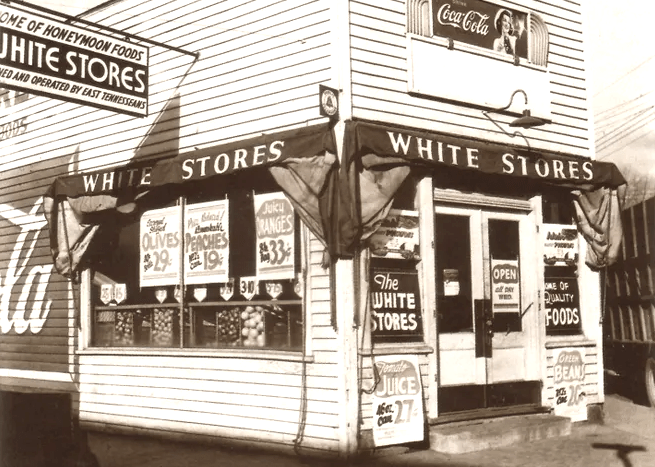There were six brands of flour listed, ranging from $1 to $1.80 for a 24-pound bag. That’s a lot of flour. White Lily, of course, sat at the top of the price range. Good Seasoning bacon was 18 cents a pound, and a can of salmon or tomatoes could be had for 15 cents.
Those were specials advertised by L.O. Rogers & Sons grocers back in 1920. Trade with them “and bank the difference. There is a Rogers Store near you!” Indeed, there were, 17 total. Look around now, and there isn’t one to be found. Except there are, just under a different guise.
This is an origin story, much like the Rebel Railroad begat Goldrush Junction which begat Silver Dollar City which begat Dollywood. L.O. Rogers was Leon Osmond Rogers, and in the early part of the 20th century he owned a stable of grocery stores across Knoxville. He opened his first one in 1909 somewhere on Ailor Avenue (Washington Street at the time) not too far from his home on Cowan Street, in the zone between Fort Sanders and Mechanicsville. His capital investment to get started was $325.
Leon was born in 1856, most likely in Blount County, the son of a Methodist minister who fought in the Mexican-American War. By 1877, he was in Anderson County and had married Mary Longbottom, with whom he had four sons. In 1883, he and his family had moved to Knoxville where he worked various jobs until getting up enough money to start his grocery empire. Eventually, two of his sons, Walter Bascom and Charles Franklin, joined him in the business.
By May 1921, with their father aging, the sons were looking to expand their horizons. They were raising capital to open/purchase more stores across East Tennessee, with plans to head to Maryville, LaFollette, Morristown, Harriman and Jellico. They were even looking to cross into Kentucky, looking at Harlan and Corbin. They were aiming for a $1 million investment, starting with the stores in Knoxville, with all of them remodeled on the same plan with uniform fixtures.
Less than a year later, however, everything had gone awry. Leon the patriarch died on August 30, 1921, at the age of 64, reportedly from Bright’s disease, a catch-all term at the time for various ailments of the kidneys. By then, he was living in Island Home. He was lauded in his obituary for his business acumen and community involvement, especially with Second Methodist Episcopal Church. His services were well attended and he was buried in New Gray Cemetery.
Exactly what went wrong with the company is unclear, most likely a classic case of reach exceeding grasp. But by early 1922, lawsuits from investors were flying, the company was in receivership and a sale *on the courthouse steps* was imminent.
Those of us of a certain vintage recall when White Stores were ubiquitous in Knoxville and across East Tennessee. And there’s no doubt plenty of readers may have a done a turn bagging groceries, running a cash register or stocking shelves as a first job. Well, White Stores started with 17 locations when Frank McDonald purchased the L.O. Rogers & Sons stores for $38,000 back in 1922. In 1989, White Stores were purchased by K-VA-T Food Stores Inc. and became part of Food City. Though he didn’t live to see his creation upended, that’s how a preacher’s son started a grocery chain in Knoxville.
Beth Kinnane writes a history feature for KnoxTNToday.com. It’s published each Tuesday and is one of our best-read features.
Sources: Knoxville News Sentinel digital archives, McClung Historical Collection digital archives.

